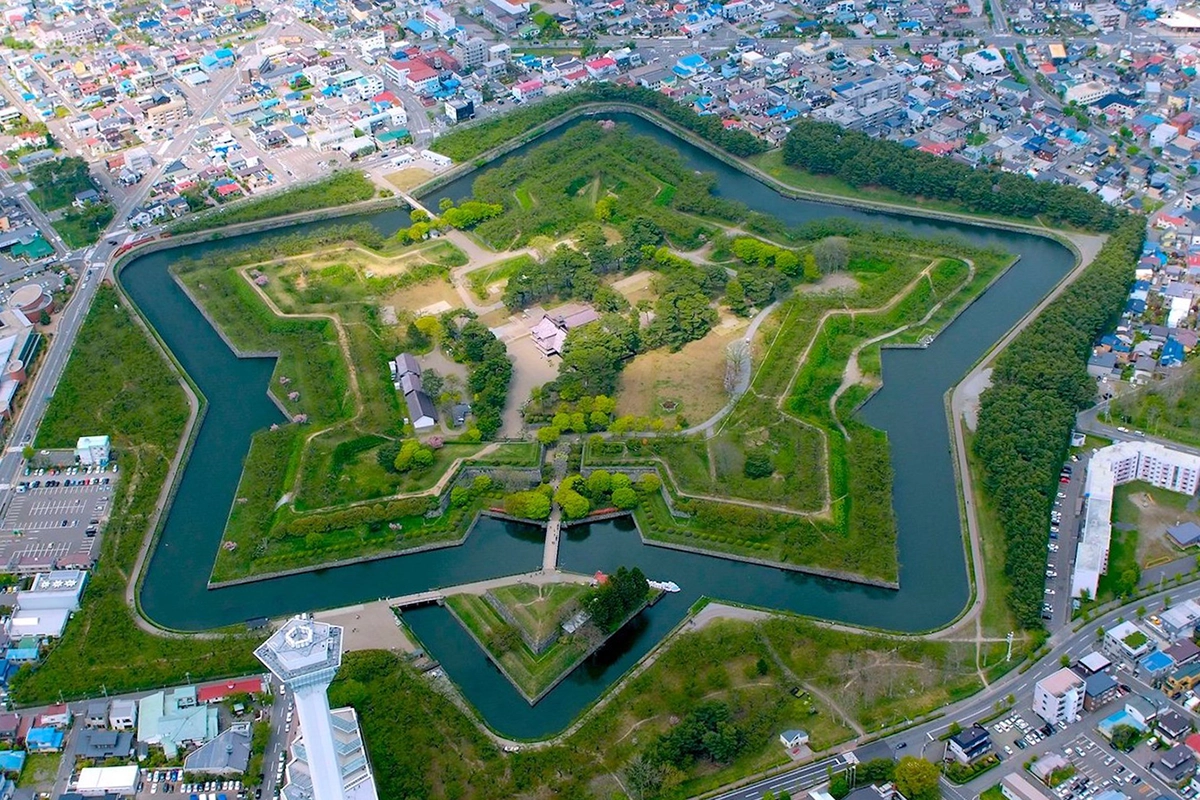Goryōkaku: Unveiling Japan’s Starry Military Legacy
In the picturesque city of Hakodate, Japan, nestled along the northern coast, a remarkable piece of history unfolds. Goryōkaku, a star-shaped fortress, stands as a testament to Japan’s military past, offering an intriguing blend of architectural mastery and strategic significance. Designed by Takeda Ayasaburō in 1855 and completed in 1866, Goryōkaku boasts a unique design inspired by the renowned French architect Vauban, which sets it apart from traditional Japanese fortresses. With its distinctive layout, this fortress could accommodate more gun emplacements, rendering it an imposing defensive structure.
Goryōkaku’s raison d’être was to safeguard the Tsugaru Strait against potential Russian incursions. Perched atop a commanding hill, it provided an unparalleled vantage point, enhancing its military advantage. The fortress remained an active military installation until 1910, protecting Japan’s interests in an era of political upheaval.
The historical significance of Goryōkaku transcends its architectural beauty, as it played a pivotal role in the Battle of Hakodate. This epic confrontation, occurring in 1869, marked the culmination of the Boshin War, a decisive moment in Japan’s history. Over the span of a week, pro-imperial forces led by Enomoto Takeaki faced off against their imperial counterparts. The battle concluded with a resounding victory for the imperial army, heralding the onset of the Meiji era, characterized by a transformation of Japan’s political and social landscape.
Today, Goryōkaku has seamlessly transitioned from a symbol of military might to a beloved tourist destination, offering visitors an opportunity to delve into Japan’s rich military heritage. As you step onto the fort’s grounds, the aura of history engulfs you. Goryōkaku’s sprawling green spaces provide a tranquil escape, with sweeping vistas of the surrounding city and the boundless ocean beyond. However, it is during the spring season when Goryōkaku truly blossoms, both figuratively and literally. The fortress is adorned with a breathtaking cherry blossom spectacle, drawing countless visitors for hanami, the cherished tradition of cherry blossom viewing.
Dominating the landscape within the fortress is the Goryōkaku Tower, a towering edifice that promises a spectacular panoramic view of the entire fort and its picturesque surroundings. The tower is more than just a viewing platform; it houses a museum dedicated to Goryōkaku’s historical journey, allowing visitors to delve into the fortress’s past, from its military roots to its peaceful present.
Yet, Goryōkaku’s allure goes beyond its tower and museum. The fortress’s underground bunkers and tunnels conceal secrets and tales of yesteryears. These subterranean passageways, once the domain of soldiers, offer an immersive experience, shedding light on the daily lives of those stationed within Goryōkaku. As you explore these hidden chambers, you can’t help but feel the echoes of the past, reminding you of the sacrifices and valor that unfolded within these very walls.
Goryōkaku is more than just a historical relic; it is a living testament to Japan’s enduring spirit and resilience. Its star-shaped elegance, fortified walls, and evocative history provide a unique blend of visual splendor and cultural significance. For history enthusiasts, architectural aficionados, and those simply seeking to soak in the past, Goryōkaku offers an enlightening journey through Japan’s captivating military legacy.
In the heart of Hakodate, this starry fortress beckons, promising an unforgettable exploration of Japan’s bygone era. As you stand amidst the cherry blossoms, overlooking the expanse of Goryōkaku, you’ll find yourself transported to a time when this fortress was not just a symbol of power but a crucible of historical change. Goryōkaku is a living testament to the resilience and adaptability of a nation, making it a must-visit destination for anyone eager to unearth Japan’s rich military past and revel in its scenic splendor.
